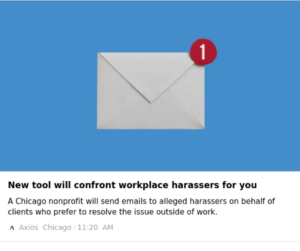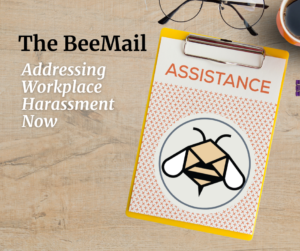HR Investigation Process

Prepare to go to HR
Determine your needs and goals
Define your needs: Why are you going to HR? What problems do you need them to resolve?
Define your goals: What is your preferred outcome for going to HR? Ideally, how will your HR department achieve your desired outcome?
Review your company employee handbook
Read your handbook on harassment/descrimination. Become familiar with your company’s employee manual. It will help you understand the company rules, the reporting process and their responsibility.
Review all reporting options. The employee manual should define a process for reporting harassment and discrimination. When possible, you should try to adhere to that process. You should also feel comfortable making the process work for you, especially if the process puts you at a disadvantage or at risk. Some companies have multiple ways to report harassment to HR.
Review the investigation process. Make sure you are comfortable with the process, and participate in the process as defined.
Write down questions where the information, process, or possible outcome is not clear. The employee manual may not give you all the information you need to make the right decision for you.
Assess options and risks
Assess your personal risk. Can you leave your job if it becomes necessary?
Assess your company’s culture and toxicity. Be aware.
Understand the players. Write down everyone’s roles and responsibilities in the process.
Create a plan for yourself. How far are you willing to go? What will you do if they fire you or if working at the company becomes difficult?
Review reporting options (anonymous, informal, formal, etc.), and determine which option works best for you.
Prepare documentation
Prepare documentation for yourself, including:
- Clearly state the harassment and discrimination you are experiencing
- If you are experiencing harassment, and it is a form of discrimination, include that in your statement. The company may have different procedures to deal with discrimination than harassment. For example, if you are a women experiencing sexual harassment, include gender discrimination as part of your complaint. See all definitions HERE.
- Include all costs you have had to take on as a result of harassing behavior. See costs template HERE.
- Include your written complaint with details (i.e., a timeline of events surrounding the harassment, everyone you spoke to about it, witnesses, evidence such as texts or photos, etc.) See our documentation templates HERE.
- Include what you want the outcome to be
Make copies for yourself and HR. This is your complaint.
Prepare your questions for HR
Write down your questions for HR including, but not limited to:
- What is the investigation process?
- Who will be conducting the investigation?
- Are previous complaints, if any, taken into account?
- What is the time frame?
- Will your complaint remain confidential?
- Who will be informed of your complaint?
Write out your boundaries and expectations. Include them as part of your complaint.
It’s okay to make the HR reporting process work for you, especially if your company’s reporting process puts you at a disadvantage.
Some examples of boundaries may include:
- You will be informed of everyone made aware of the complaint, even if your name isn’t shared
- You will be informed when the investigation is complete, and what the result is
- You will be given time away from work, if necessary
- The company will provide support to you as needed (ex: counseling)
It’s okay to make the HR reporting process work for you, especially if your company’s reporting process puts you at a disadvantage.
The Meeting: Reporting Harassment to HR
Send an email requesting a meeting
Send an email requesting a meeting with your HR representative. See email example HERE.
- Do not include your written complaint in the email. You want them to HEAR your complaint, your questions and your boundaries face to face, before they start an investigation.
- Request a meeting offsite, or in a meeting room that ensures your privacy.
- If you need a third party for support (ex: attorney, family member, friend), let them know who will be attending the meeting with you.
Meet and report
When meeting with your HR representative:
- Report your harassment timeline to HR verbally and give them a copy of the complaint. This should include all details and the timeline, everyone you spoke to, etc. This should also include your expected boundaries.
- Ask all questions you have, and write down their answers. Make a note of any additional questions that come up during the meeting.
- Speak about your expectations for accountability and your boundaries during the investigation process. Make sure they agree to your conditions.
- After the meeting, complete your documentation of the meeting, and include the names of everyone in the meeting and the date. See documentation template HERE.
- Send an email with your notes to HR.
- Have them send their notes to you as well.
- Note in your calendar the day you reported your complaint and the ETA for resolution.
- Note in your calendar, the EEOC reporting deadline date (see dates HERE).
The HR Investigation and Resolution Process
Investigation
The company has two goals while conducting an investigation: to determine if harassment or discrimination occurred, and to determine “to what extent the employer is liable.” Human resources will manage the complaint and investigation process to its resolution.
- Your company may choose to conduct the investigation internally, or hire an outside firm.
- Your colleagues are under no obligation to participate in an investigation, even if they have information that can validate your complaint.
Finding
The investigation will conclude with one of three outcomes: harassment or discrimination did occur, there is not enough evidence to determine if harassment or discrimination occurred; or harassment/discrimination did not occur.
- Your Human Resources representative should communicate the results of the investigation and next steps.
- Your company may present you and all relevant parties with an agreement that outlines the steps the company is taking to resolve the issue and conclude the investigation.
Agreement/Settlement
Your company draw up and present a formal, written or verbal agreement for one or all parties involved.
- HR may present and negotiate a settlement for a non-disclosure (NDA)/no-legal suit for a specific dollar amount.
- You may want to consult an attorney if a settlement is offered (see our guide to Consulting an Attorney (HERE).
- We recommend you do not sign an indefinite NDA, as it is binding for life.
- Beware of language that puts the fault on you, or determines fault is shared.
Accountability
Make sure a settlement or agreement aligns with your needs and goals. You will have to be diligent and keep your company accountable if they breach any terms of your mutual agreement.
- If you experience retaliation, or you are let go (fired), an EEOC complaint may be your next option, regardless of investigation finding.
- If the company doesn’t honor their agreement document, address this with your HR representative or determine if filing a complaint with the EEOC is an option.
Has your complaint been resolved?
Do you feel your complaint was addressed and resolved to your satisfaction? Has your company followed through with their agreement? Has your company held the appropriate people accountable for their actions? If not, you may want to consider the following:
Get the Latest Buzz
Subscribe to our regular newsletter for the latest news and actions. Your info and time is safe with us!
The Latest News
- March 2024 – NewsletterReading Time: 2 minutes Latest News from the Wolf and The Bee: including our latest media coverage, hitting an impact milestone, a logo glow-up, and new shop items to help you represent!
- Press Coverage: Axios ChicagoReading Time: < 1 minute Axios Chicago Coverage: A Chicago nonprofit is offering a novel service to address workplace harassment: sending cautionary emails to alleged harassers on behalf of unnamed accusers.
- Voyage Utah InterviewReading Time: 3 minutes Voyage Utah: Inspiring Conversations with Sandy Lisonbee of The Wolf and The Bee “Discrimination, bullying, and harassment should not be a condition of work. We want to empower each person to make the best decision for where they are in their professional lives and account for their circumstances. “
- Feb-2024 News ReleaseReading Time: 2 minutes NEWS RELEASE: Sexual Harassment ‘Perpetrator’ Targeted by Chicago-Based Non-Profit. Harassment Resource Organization Launches Innovative Program
- August-2023 NewsletterReading Time: < 1 minute Latest News from the Wolf and The Bee: including update on our first annual networking event and fundraiser.
The Latest Blog
- Silent Sisterhood SurveyReading Time: < 1 minute Silent Sisterhood is conducting an an important study on gender discrimination and we need your voice, experience and insights.






